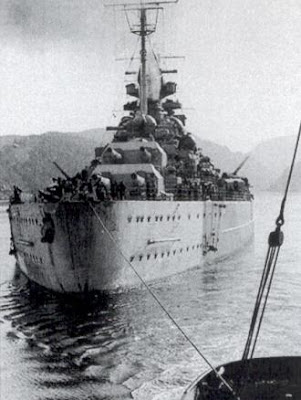The battleship Ise was a dreadnought battleship in service with the Imperial Japanese Navy between 1917 and 1945. It was one of the most powerful war vessel of WW1 and WW2 as it was fitted with twelve 356-mm (14 in) naval guns, which were mounted in six twin turrets, and twenty 140-mm (5.5 in) guns. Her belt armor was 300-mm-thick at water line level. She was the lead ship of her class, the other being the Hyuga.
The battleship Ise was built between 1915 and 1917 by Kawasaki, at the Kobe shipyard. She was commissioned during World War I as a "superdreadnought", ending her career as a battleship carrier. This was due to the fact that her original configuration was modified in 1943, after the Battle of Midway; the Japanese engineers replaced the rear gun turrets with a flight deck to accommodate an air group of floatplanes. Since it was not long enough, the flight deck was equipped with forward catapults. Twenty two aircraft could be carried, with nine in the hangar.
Taking part in the Battle of Midway of June 1942, Ise also participated in the naval Battle of Cape Engano in 1944. At the end of the WW2, she was transferred to the South China Sea. Having survived this armed conflict, she was scrapped in 1946.
Specifications
Type: Dreadnought battleship
Length: 208.18 m (683 ft)
Beam: 28.65 m (94 ft)
Draft: 8.93 m (29 ft, 4 in)
Displacement: 31,750 tons
Power Plant: 4 steam turbines, with 4 shafts, fed by 24 coal-fired, water-tube Kampon boilers.
Maximum Speed: 25 knots
Crew: 1,360 men, and 1,463 sailors after carrier conversion.
Below, a photo of the battleship Ise taken around 1937, during the Japanese invasion of China.








